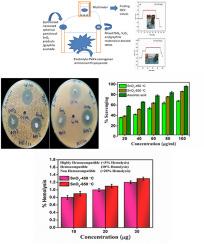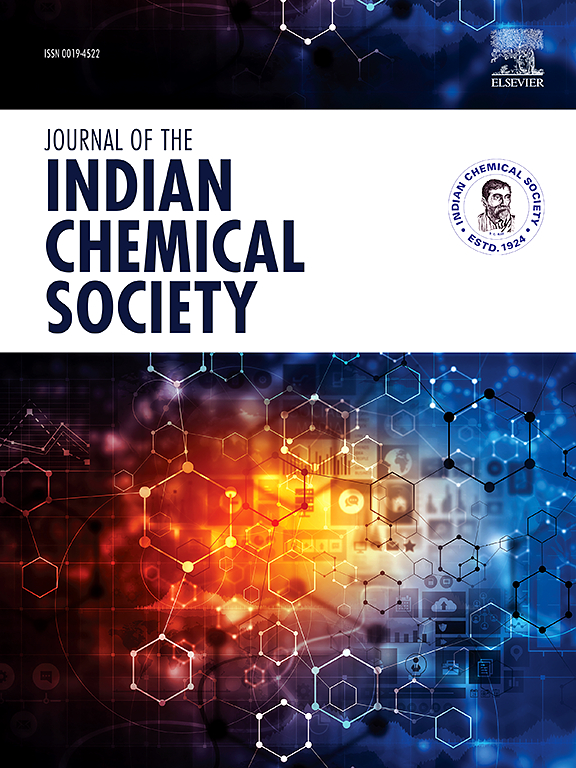Impact of calcined temperatures on the crystalline parameters, morphological, energy band gap, electrochemical, antimicrobial, antioxidant, and hemolysis behavior of nanocrystalline tin oxide
Abstract
To construct a battery, the precipitation-synthesized SnO2 products at 450 °C and 650 °C were separately taken and mixed with graphite as the anode and PbO2,V2O5, and graphite materials as cathode materials to make the pellets and examine their open circuit voltage (OCV) values. The microstrain, lattice parameter, and crystallite size values of the above-mentioned tin oxide compounds were obtained through Rietveld refinement-MAUD fit analysis. The microstrain and lattice parameter values of tin oxide were significantly varied at a higher calcined temperature. Surface particle grain growth was increased with the increased calcined temperature from 450 to 650 °C as evidenced by FE-SEM study. Particle size distributions of SnO2 and polycrystalline behavior have been discussed with the aid of TEM analysis. From the UV–visible spectra, optical band gap (Eg) values reduced from 3.73 to 3.69 eV for the SnO2 products with an increase in calcined temperatures from 450 to 650 °C. The antimicrobial responses of the two different calcined SnO2 samples at 450 °C and 650 °C against two different bacterial pathogens (gram-positive-S. aureus and gram-negative-E.coli) were investigated. From the microbicidal assessment, a relatively higher diameter of the zone of inhibition (DZOI) of tin oxide at 650 °C samples was measured to be 19 ± 2 mm and 21 ± 2 mm for S. aureus and E. Coli than the DZOI of SnO2 at 450 °C samples (15 ± 1 mm for S. aureus and 18 ± 1 mm for E. coli. DPPH scavenging activity at 100 μg/ml shows that SnO₂ calcined at 450 °C achieves 68 ± 1 %, while SnO2 calcined at 650 °C exhibits a significantly higher activity of 86 ± 1 %. A slight increase in hemolysis was observed for SnO2 calcined at 650 °C, reaching 1.3 % at higher concentrations, but overall, hemolysis remained below 5 %, indicating high hemocompatibility.


 求助内容:
求助内容: 应助结果提醒方式:
应助结果提醒方式:


